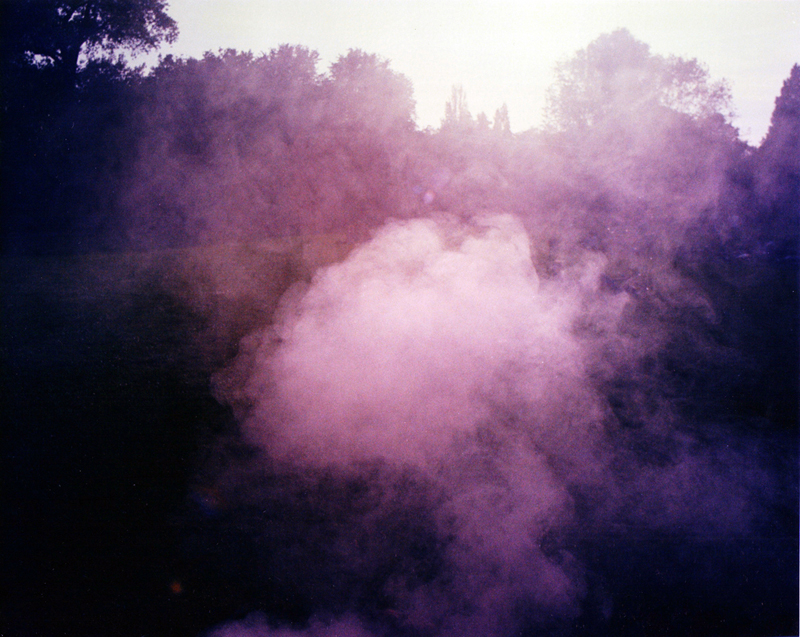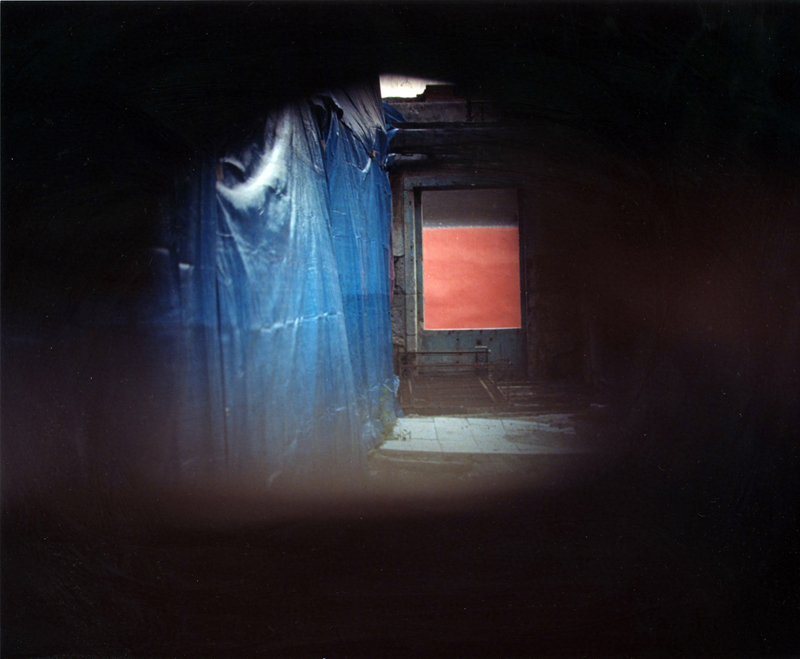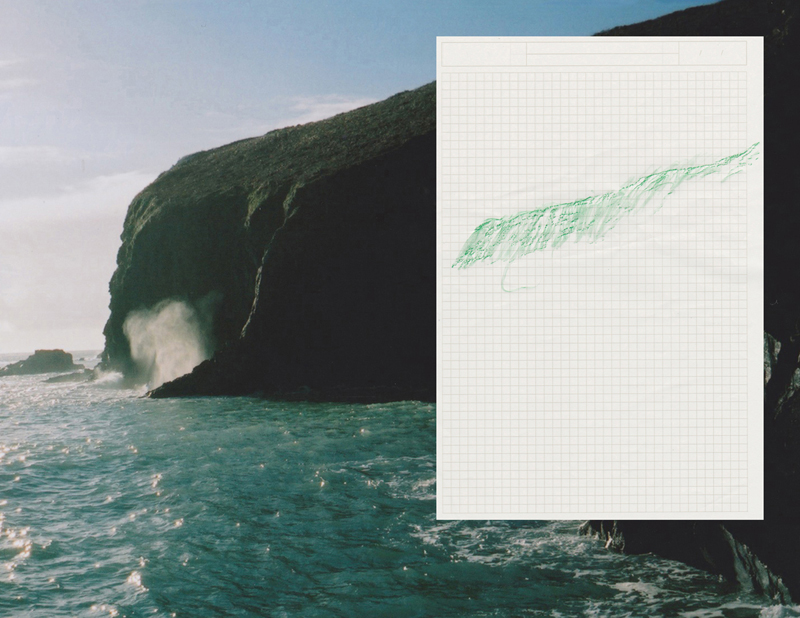This is the third in a series of interviews with each of the Sondheim Award Semifinalists. Finalists will be announced in mid-April, and will be on exhibit at the Walters Art Museum June 21 to August 17; those not selcected as finalists with be exhibited at the Decker, Meyerhoff and Pinkard Galleries at MICA July 17 to August 3, 2014.
Name: Ding Ren
Age: 30
Website: www.dingren.net
Current Location: Amsterdam, NL and Columbia, MD
Hometown: Columbia, MD
School: George Washington University, MFA (2009)

studies on becoming a closet formalist: smoke
Hand-Printed Analogue Chromogenic Print on Expired Kodak Endura Paper
11″ x 8.5″
2013
Trying to capture the essence of Duchamp’s definition of Infrathn: “When the tobacco smoke smells also of the mouth which exhales it.” Painterly gestures, romanticism and a turn towards the sublime are channeled through analogue photographic processes in this ongoing series.
Current favorite artists or artwork : Joachim Koester (Danish Conceptual Artist), Ciarán Murphy (Irish Painter), Robert Kinmont (American Conceptual Artist), Daido Moriyama (Japanese Photographer)
How would you describe your work, and your studio practice? My work is field-driven, as in I gather my inspiration from direct experiences and observations from my day to day life. Currently, I have returned to analogue photographic practices. I allow external factors attributed to the geography and environment to directly influence how and what I photograph.
What part of art making to you like or enjoy the most? The least? I enjoy the unknown of wandering and photographing both foreign and familiar places. I also enjoy planning and producing, especially if it is specifically for an exhibition, project, or residency. I am fortunate to be part of a “doka collectif” in Amsterdam where we maintain the last remaining independent analogue color darkroom in Holland. I can spend endless hours printing and enjoy the slow, hands-on quality of analogue photography.

Shifting Between (Portal Studies)
Hand-printed Analogue Chromogenic Print on Expired Kodak Endura
11” x 14”
Photo: 2012, Printing: 2013
For the past year I have been moving around, never staying in one place for more than 2 months. The experience has been exciting and fulfilling, but has taken a toll on my health. I started this series as a means of therapy and it is helping me get through the discomforts. I am trying to capture the very essence of transience and what it might look like through the use of analogue photography. This is a portal opening, it is a means of transport from a foreign place to a familiar place. I have begun to search for these familiar places within the foreign, so that I am able to find stability and balance once again, to find lightness to take me out of the darkness.
What research do you do for your art practice? I usually come across small fragments for ideas through taking walks, reading books (especially classics), and seeing exhibits. I find looking at early landscape paintings from the 1600s to be quite poignant, especially the way in which light is captured and in the way the skies are painted. I like to go to the Rijksmuseum and look at the Dutch Master paintings.
What books have you read lately you would recommend? Movies? Television? Music? After spending 2 months in Cork, Ireland at a residency, I have been in the mood to read Irish writers like Samuel Beckett. I especially like his writing style for his “Texts on Nothing.” I also enjoy reading poetry, recently I discovered Cuban poet, Heberto Padilla, who often writes about the ever-changing qualities of water and the sea. The band I can’t stop listening to these days is Woods and singer, Ashley Eriksson.

the waves would welcome it beneath the sea (rock frottage studies)
C-prints: unique, Rock frottage drawings: graph paper, crayon
8.5” x 11”
2014
Created while in residence at The Guesthouse in Cork, Ireland. I traveled to Ireland to search for the sublime feeling of both beauty and fear that comes with standing on the edge of a cliff, overlooking something. I wanted to investigate geo-cultural patterns and phenomena within the landscape. To prove that these coincidental patterns exist, I made rubbings of the rocks along the coast of Nohoval Cove while also photographing the cliffs and rocks. By chance, the rock rubbings echoed the photographs I took and vise versa.
Do you ever get in creative dry spells, and if so, how do you get out of them? Yes of course, but I try to think of it all as nature’s way of balancing itself out and make the most out of all phases and stages. There can be months where I am only doing administrative things like editing and organizing and applying to opportunities while other times I take a break from any art-related things and other times I am out photographing everyday.
How do you challenge yourself in your work? It is all about comfort zones and pushing beyond them. This is the way in which I approach my work and all facets of life.
What is your dream project? I would love to shoot several 16mm films in various locations around the world with dramatic landscapes: think cliffs, lush green mountains, waves crashing, swaying trees, flickering light. It would be an extended visual poem and I would project the films layered over one another.
